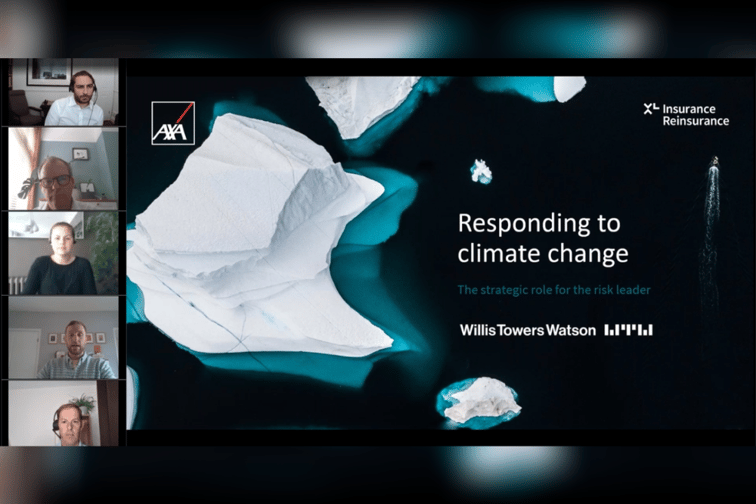

Earlier this year, the World Economic Forum found that extreme weather and climate action failure were the first and second most likely risks to influence the global landscape, while climate action failure was ranked the second most pressing risk in terms of impact. During the media briefing accompanying the report, Marsh’s Carolina Klint noted that industries and businesses must improve coordination if they are to build resilience to such risks.
Read more: Revealed: Top business risks for 2021
Examples of this collaboration were on display during the most recent Airmic Fest, including the webinar which saw representatives from AXA XL and Willis Towers Watson discuss the strategic role of the risk professional in addressing climate change. UK business manager at AXA XL Katie Lennon highlighted that there are over 1,500 live cases around the world related to climate change.
“There’s very little legal precedence on the topic of climate change,” she said, “meaning that cases are often escalated through cycles of appeal up to the Supreme Court. And while this means that lawyers can make a lot of money on cases that last 10 years, it also means that, as risk managers, we must watch the actual outcome of these cases really closely. Because one ruling could affect hundreds of other live cases, that could also trigger a number of other copycat cases.”
With so many live cases, Lennon believes that it won’t be long until some form of legal precedent is set with regards to climate change liability and her question is whether the industry is ready for that to happen.
Another key climate change consideration is the concept of stranded assets, she said, which is something the industry needs to think about during the transition to a low carbon economy. Stranded assets don’t just mean carbon-intensive assets - it’s not just about a coal-fired power plant or a steel mill which uses substantial carbon energy.
Read more: AXA XL shares carbon management strategy
“We could also be looking at assets such as beachfront assets – with rising sea levels, as asset managers for example, are you considering what the valuation of those assets is in 20 to 30 years’ time?” she asked. “This is a conversation which is happening around investors and banks at the moment so it’s on the doorstep [of risk managers].”
As head of catastrophe & climate risk management at Willis Towers Watson, Torolf Hamm has worked with clients across multiple industries and he noted that the approach to climate risk differs across sectors. From a risk management perspective, he said, those sectors with stronger physical footprints have been the first to come forward in a bid to better understand the physical impacts of climate change.
“Real estate in the UK is very far advanced in trying to understand the impact of physical climate change and has actually, as a follow-on step, also moved forward to better understand the more strategic questions about transitioning into a more carbon-free economy,” he said. “[Unsurprisingly] another sector doing so is the energy sector. Oil and gas companies really want to understand, in more detail, some of their more exposed assets and how they could potentially be impacted by climate change. This is not just in terms of the acute hazards, but also in terms of the more chronic hazards, such as not having the water supply to operate facilities.”
Hamm noted that in the financial sector, banks are becoming worried about the impact of climate risk on their mortgage books. They are concerned what the risk might do to the market value of their properties and the extent to which they could be impacted, which is a question as much about exposure as it is about how the hazard is going to change.
“So, there are linkages to what Katie has said in terms of stranded assets,” he said, “if you think about areas like Miami and its beach, we know that the sea level rise is already impacting many of these assets, so what does it mean for these prestigious assets?
“This is being seen more as not only as a sustainability issue, but also as a linkage to risk management, which is, I think, a really important step, because risk managers probably have done a lot of the footwork already. And it’s really good encouragement for risk managers to connect with their sustainability teams when trying to work out the questions around climate change.”
